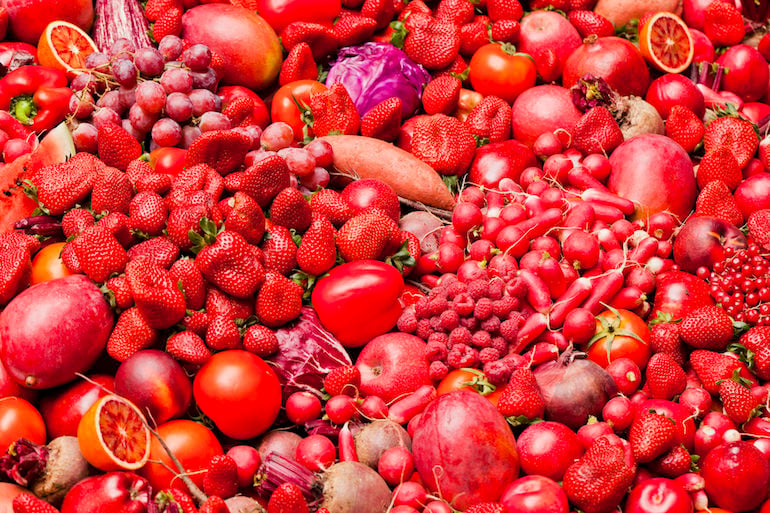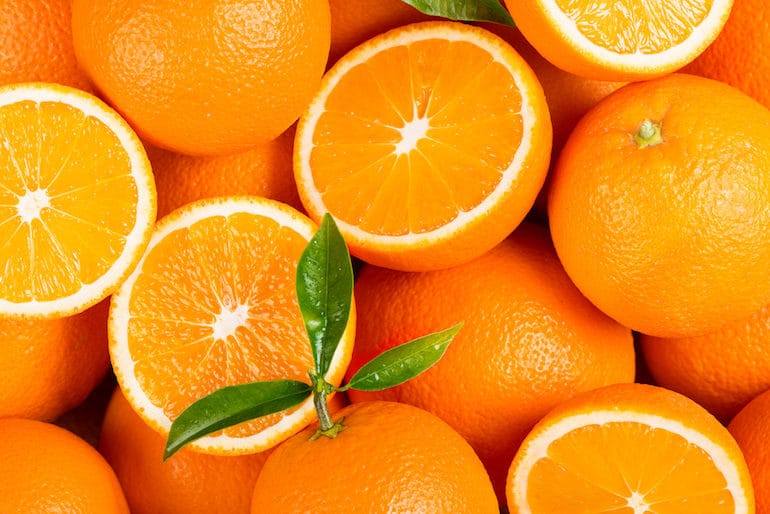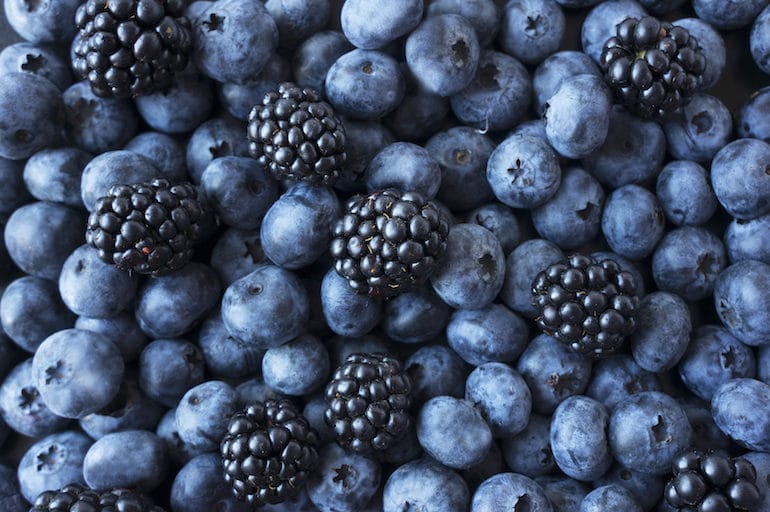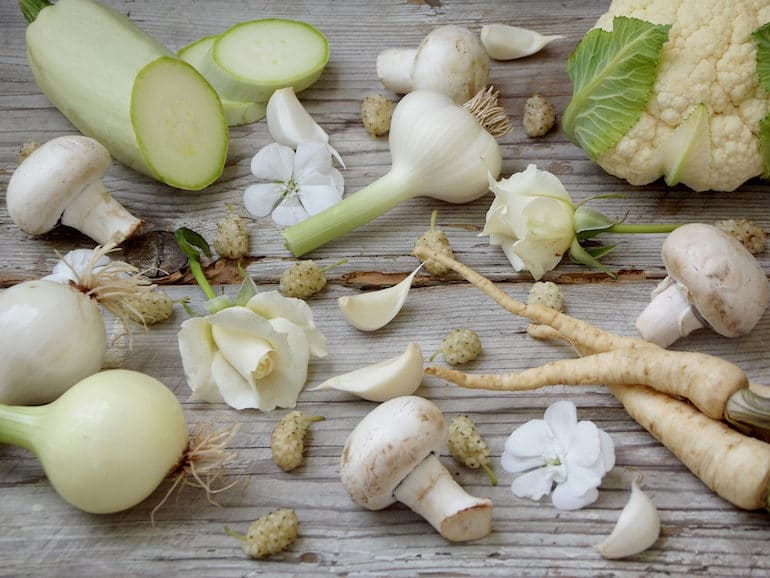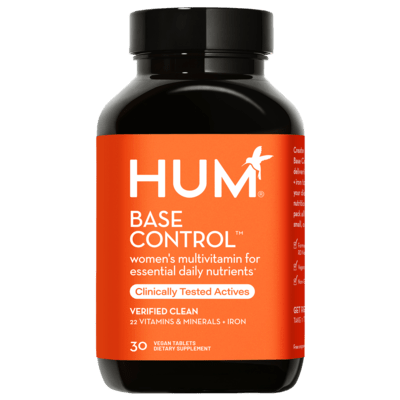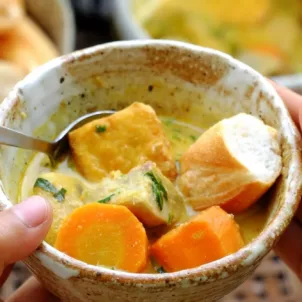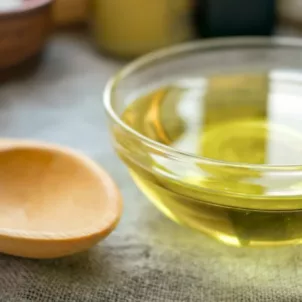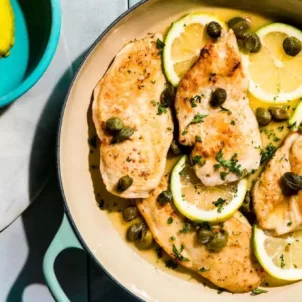THE WELLNEST • Food • Healthy Eating
Here’s Why You Should Eat the Rainbow
By Carrie Gabriel, MS, RDN •
June 20, 2019
Once upon a time, there was a candy commercial that had a tagline saying “taste the rainbow.” (Thanks, Skittles!) However, that’s not what we’re talking about here. While tasting the rainbow is a wonderful catchphrase, I’m thinking more along the lines of actual fruits and vegetables.

Why it’s important to eat the rainbow
Most people fall into a routine of eating the same few foods they enjoy. However, our bodies benefit from more variety. You should aim to eat the rainbow to get a range of nutrients—think vitamins, minerals, antioxidants, and phytochemicals—into your diet. Doing so will guide you on a path toward optimal health from the inside out.What food colors say about their nutritional value
RED
Red fruits and vegetables contain phytochemicals including anthocyanins and lycopene. Studies suggest that a diet rich in anthocyanins can be beneficial for healthy skin, protecting against inflammation and ultraviolet light. Next, lycopene may help hair growth and avoid scalp irritation. Want an easy way to incorporate lycopene into your diet? Get in a daily serving of tomato sauce. Otherwise, opt for watermelon. In fact, watermelon boasts higher lycopene levels (and potentially greater bioavailability) than tomatoes. Next, strawberries are high in fiber and vitamin C, the latter of which aids collagen synthesis and iron absorption.RED WHOLE FOODS
- Red peppers
- Tomatoes
- Strawberries
- Watermelon
- Cherries
- Grapes
- Pomegranate
- Beets
ORANGE AND YELLOW
Orange and yellow fruits and vegetables are loaded with vitamin C and carotenoids, including beta-carotene. Beta-carotene converts into vitamin A within the body, promoting healthy vision and cell growth. Even further, the benefits of higher carotenoid consumption include fewer wrinkles and furrows in the skin. Additionally, citrus fruits—which are typically orange and yellow (and sometimes green)—contain a unique phytonutrient called hesperidin. Hesperidin helps increase blood flow, making it ideal for those with poor circulation.ORANGE AND YELLOW WHOLE FOODS
- Oranges
- Lemons
- Mangoes
- Carrots
- Sweet potatoes
- Winter squash (e.g., butternut, acorn)
- Yellow summer squash
- Cantaloupe
- Orange and yellow peppers
- Golden beets
- Pineapple
- Peaches
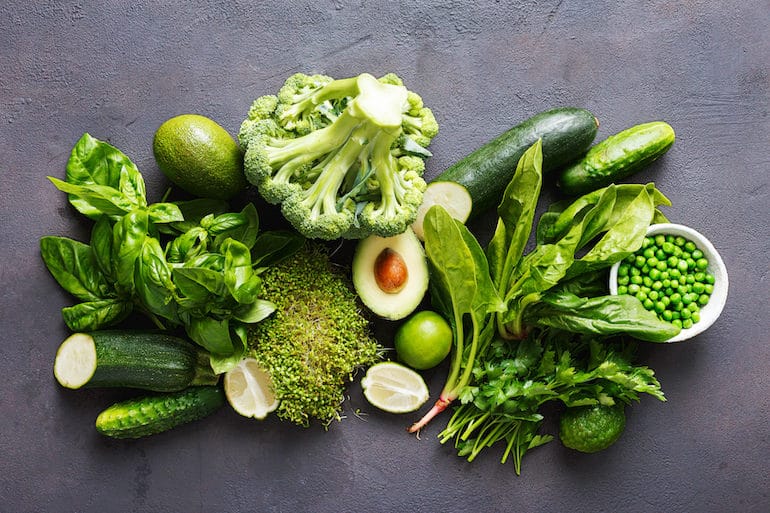
GREEN
There are so many types of green foods and even more ways to eat them! Green fruits and veggies are rich in lutein, isothiocyanates, and isoflavones. They also boast high levels of vitamin K, which is essential for blood and bone health. Additionally, green vegetables are rich in folate, a key nutrient for pregnant women to support healthy fetal development. Cruciferous vegetables—such as broccoli and Brussels sprouts—enhance immune function. Dark, leafy greens may improve mood and increase collagen production due to its vitamin C content.GREEN WHOLE FOODS
- Broccoli
- Kale
- Spinach
- Collard greens
- Brussels sprouts
- Asparagus
- Swiss chard
- Arugula
- Green beans
- Zucchini
- Kiwi fruit
- Green grapes
- Green apples
BLUE AND PURPLE
Blue and purple fruits and vegetables are rich in phytonutrients that can help repair skin damage caused by sun exposure. They also include resveratrol—the same antioxidant compound found in red wine—and anthocyanins. Anthocyanins have been studied extensively for their ability to preserve skin health and prevent skin aging. Also, studies show that the active phytochemicals in berries repair damage from oxidative stress and inflammation.BLUE AND PURPLE WHOLE FOODS
- Blueberries
- Blackberries
- Red grapes
- Red cabbage
- Plums
- Prunes
- Figs
WHITE AND BROWN
We know, these colors don’t fall under ROYGBIV. However, white and brown foods can still make for healthy choices despite their less vibrant colors. First, cauliflower is a cruciferous vegetable rich in sulforaphane, which may protect skin from UV-induced photodamage. Second, garlic and onions are in the allium family of vegetables, boasting antioxidant and prebiotic activities. Garlic also has antibacterial properties, making it beneficial to eat when fighting a cold. Lastly, mushrooms provide many major nutrients that improve skin health, including riboflavin, vitamin D, zinc, and selenium. Additionally, the anti-inflammatory and antioxidant properties of mushrooms can help calm red flushes on the skin.WHITE AND BROWN WHOLE FOODS
- Cauliflower
- Garlic
- Ginger
- Onions
- Mushrooms
- Potatoes
- Parsnips
- Jicama
Easy ways to eat the rainbow
Here are a couple of tips on how to create more colorful meals filled with variety:- If you like eggs, try a scramble with spinach and diced bell peppers for breakfast. You can even look up fun recipes using muffin tins to make egg muffins. Otherwise, start your day with a green smoothie or oatmeal topped with raspberries and blueberries.
- Spruce up your salad! Salads are the perfect way to incorporate lots of colorful veggies (and fruits!) into your diet. I love mixing spinach, arugula, strawberries, and feta cheese. Another favorite is romaine lettuce, mushrooms, oranges, avocado, and sesame seeds. Feel free to add your favorite protein and get creative with dressings.
- Slip some vegetables into a homemade soup, stew, or chili to get a balanced selection of colorful foods.
- Vegetables can be the main dish! Browse sites like Pinterest for new recipes. Dishes like vegetable stir fries, vegetable curries, and Buddha bowls are always delicious.
More like this
